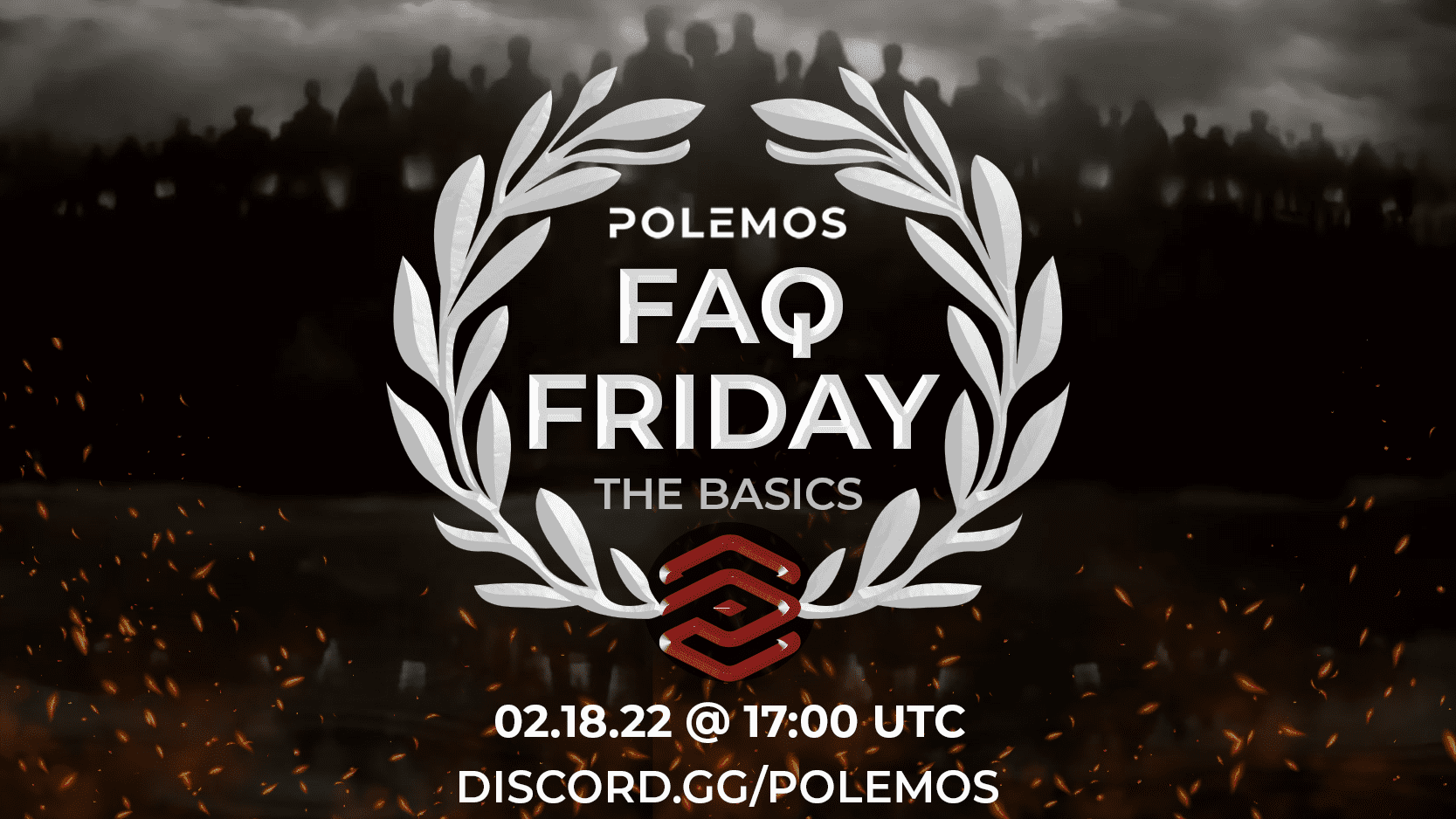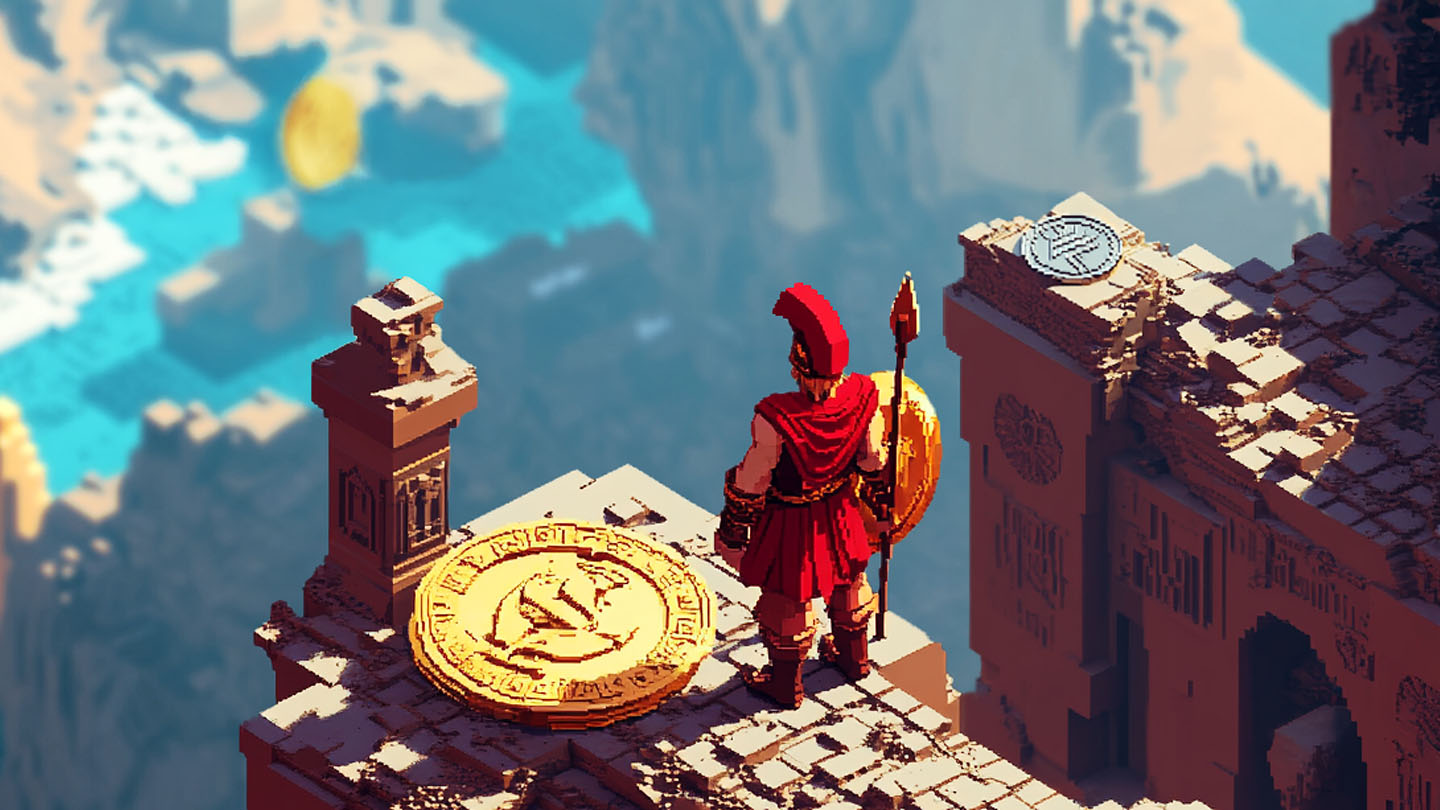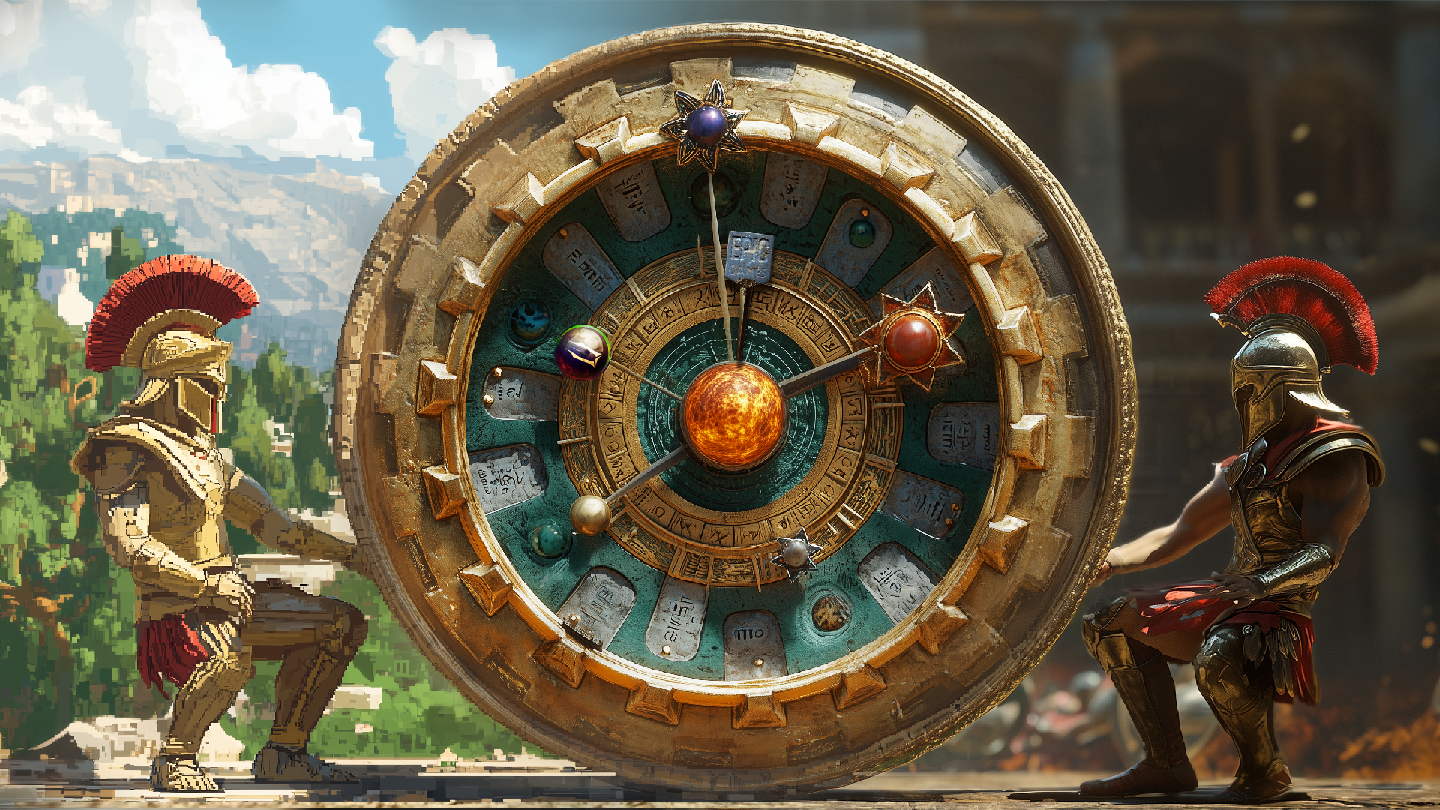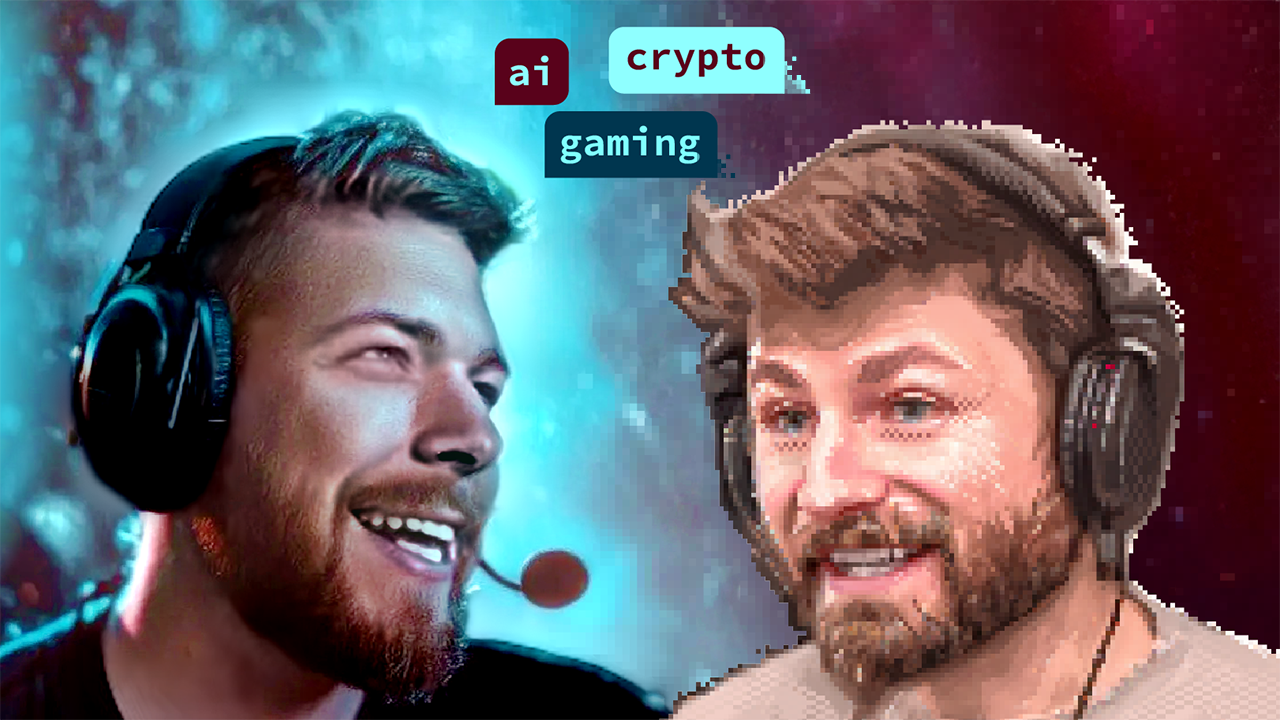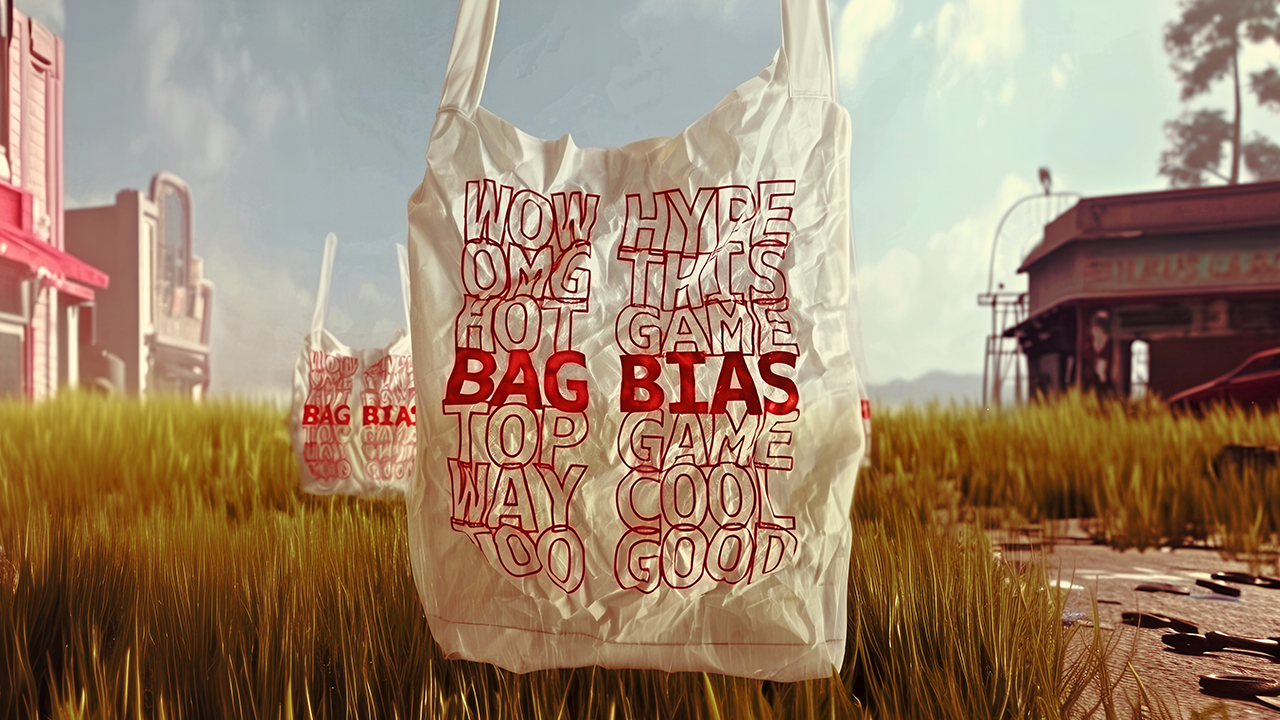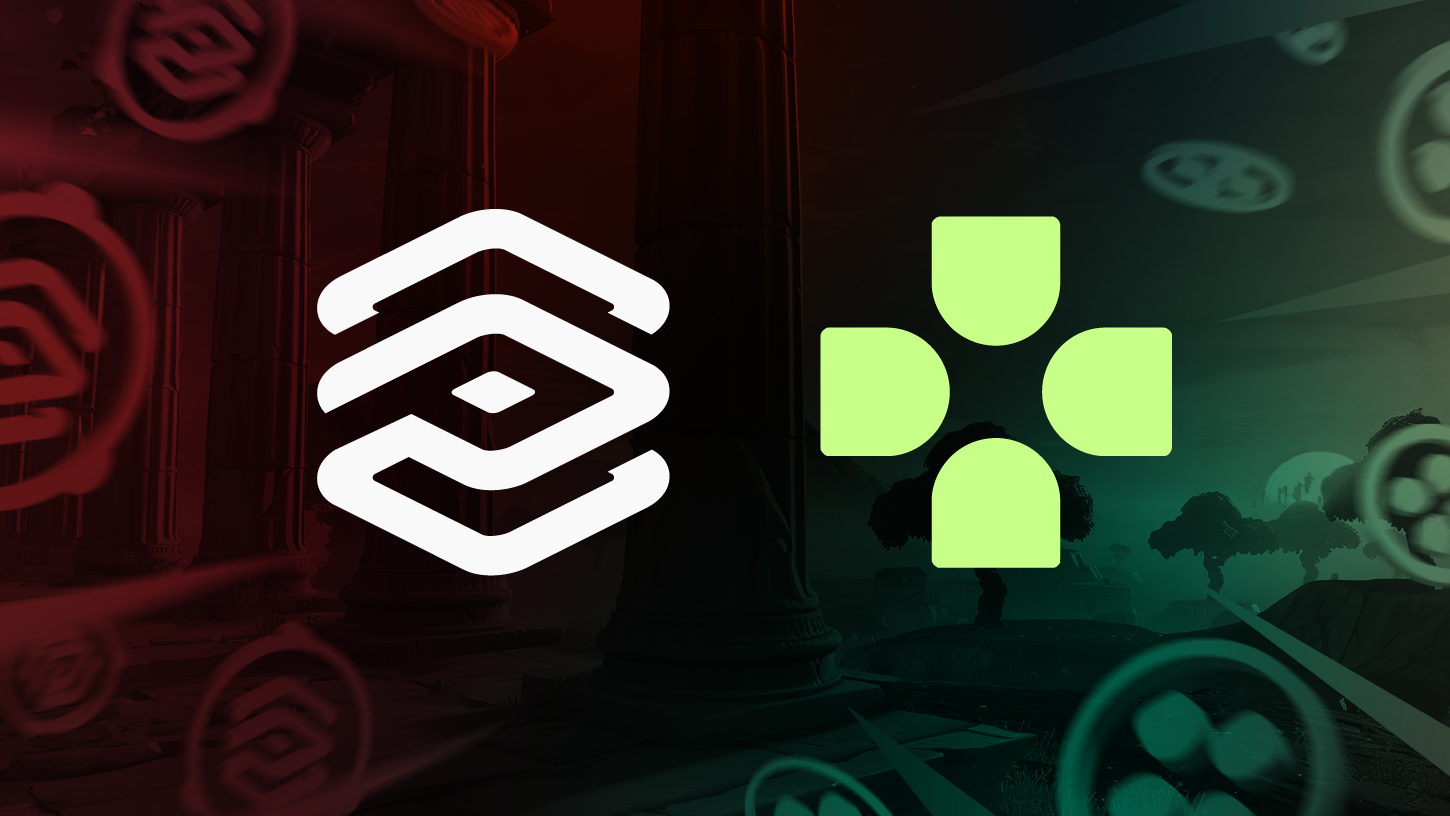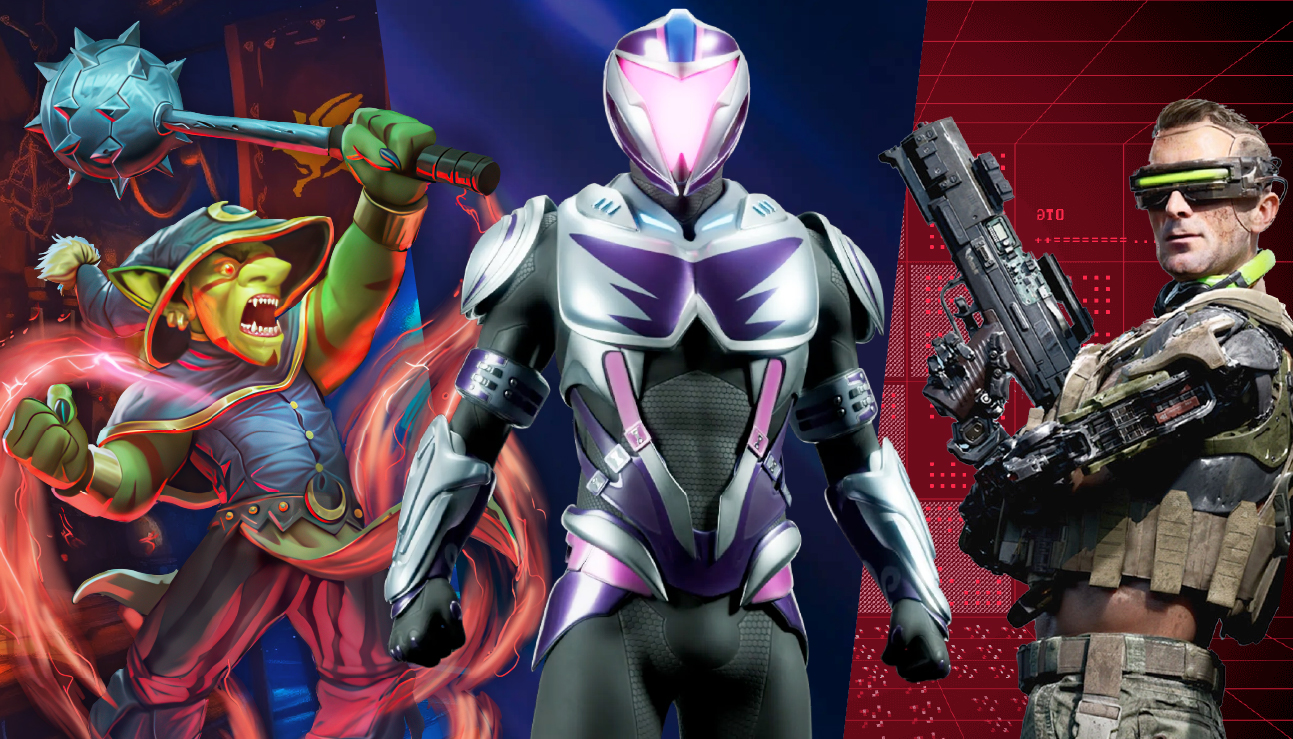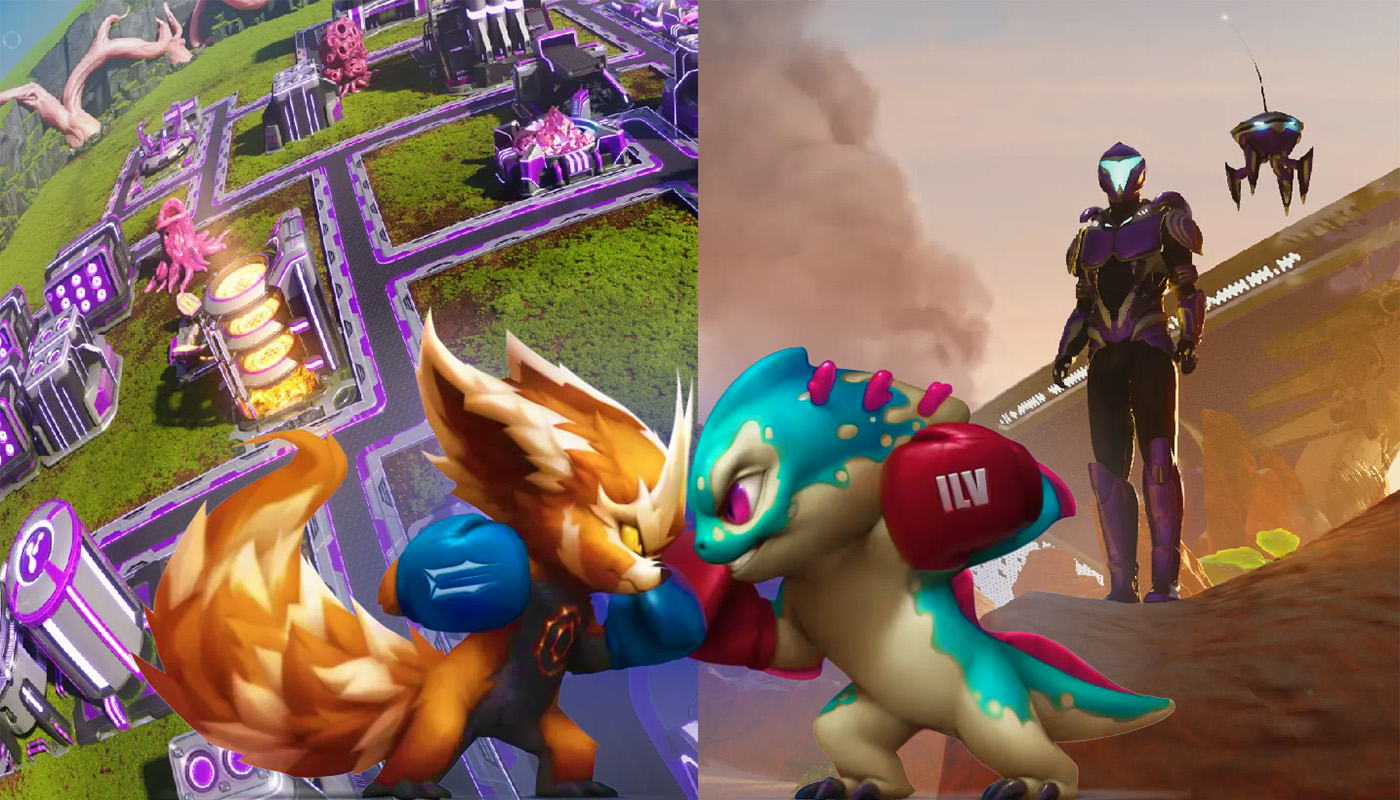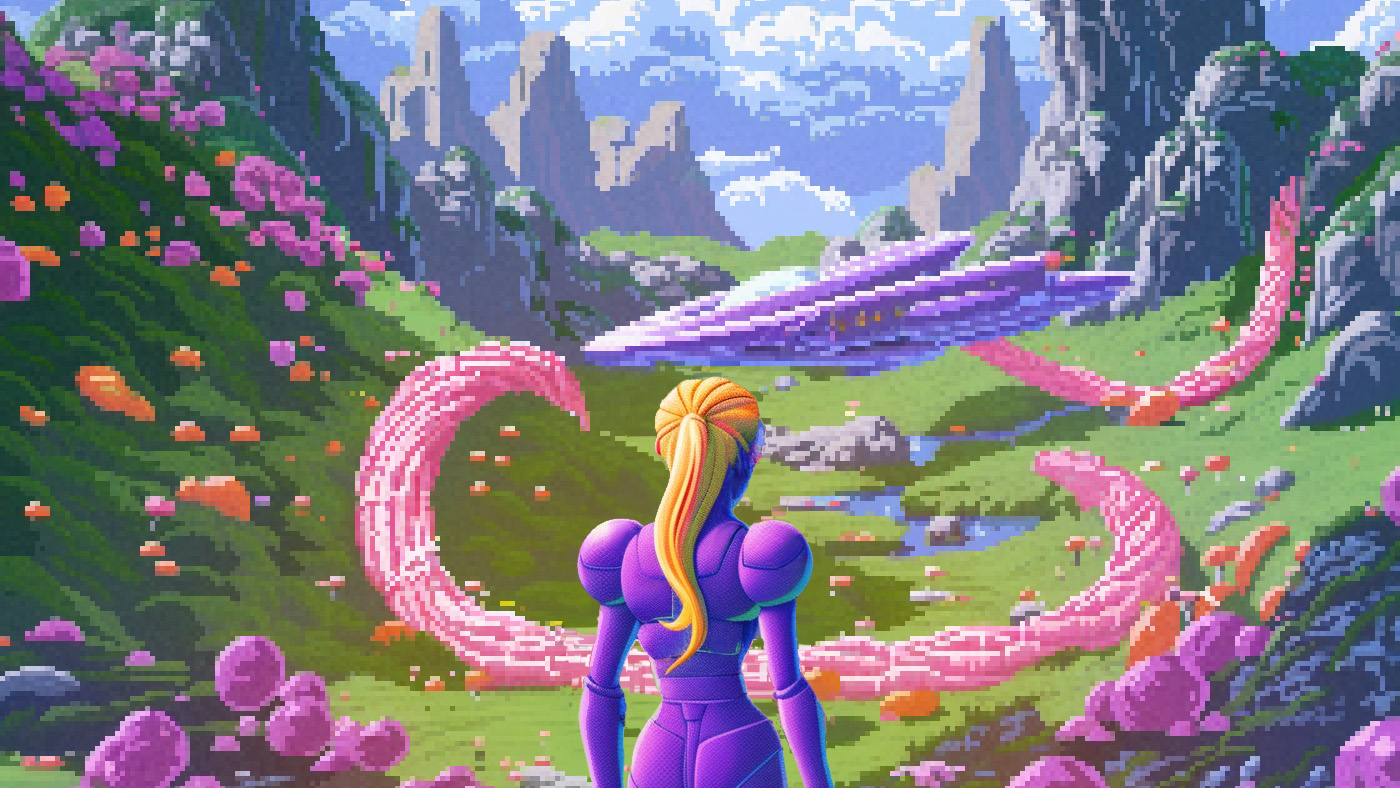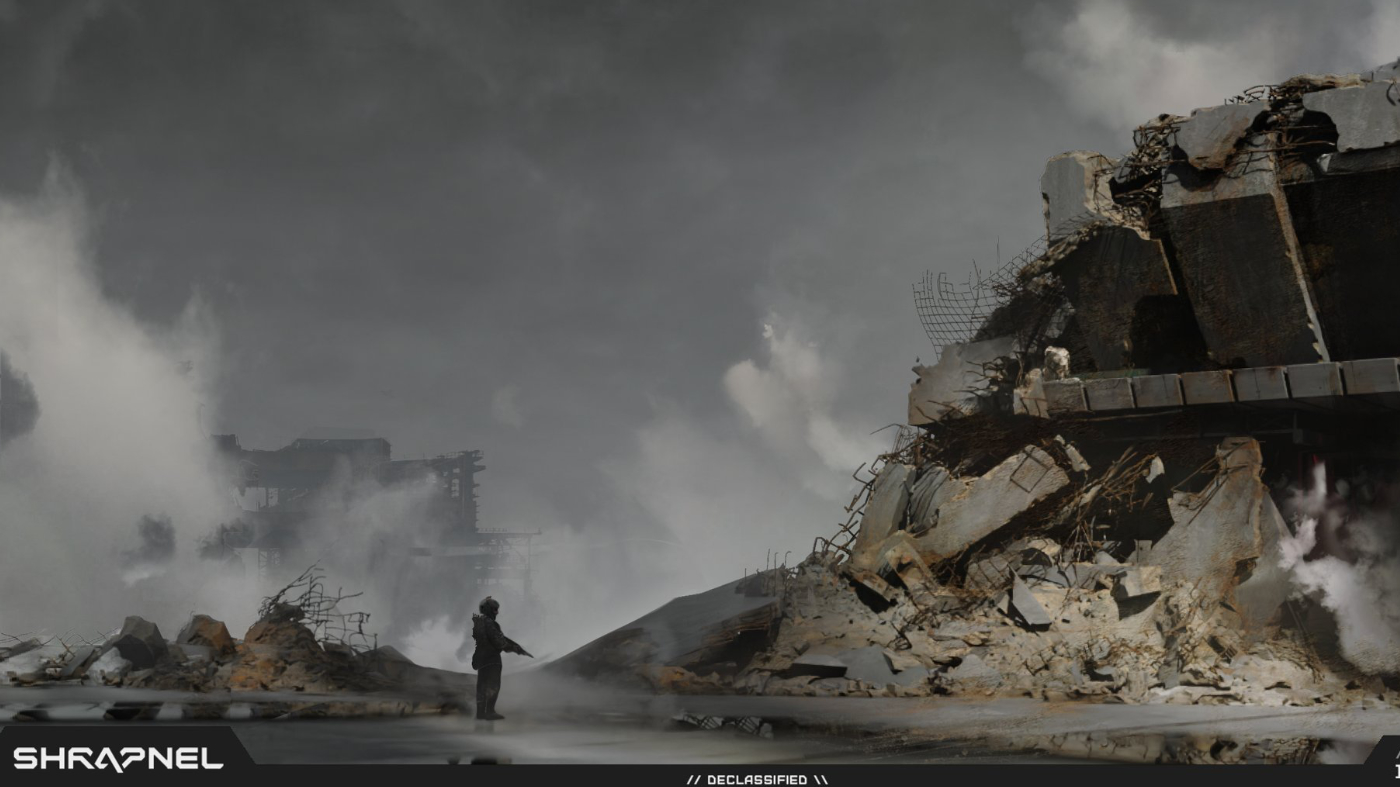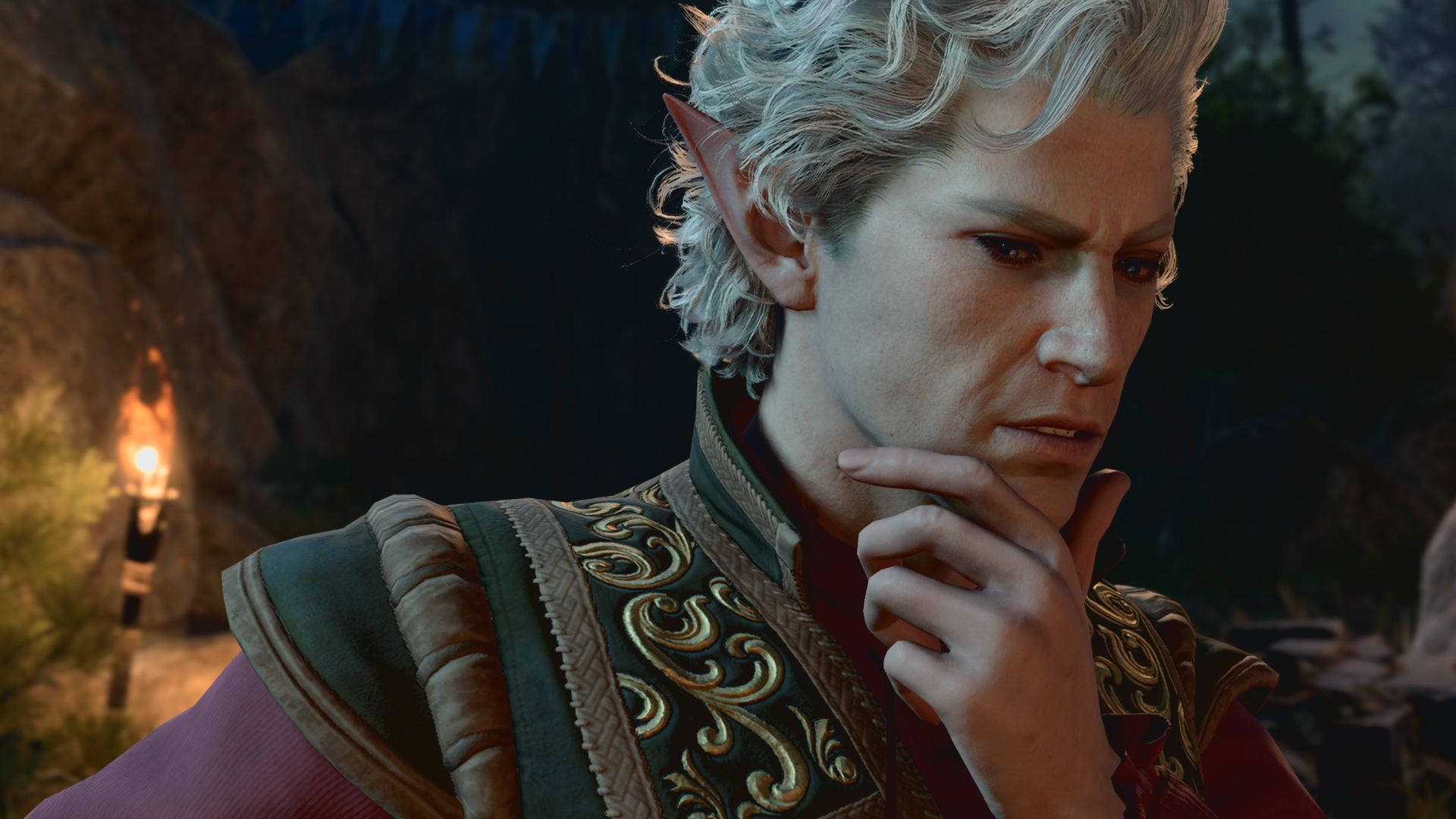Bria:
Hi everybody, my name is Zombri. I am the Marketing Mage of Polemos. And today with me I have Jeff, I have hotsauce, and I have Arash. We’re all going to be discussing the basics. We have an extremely talented team that knows everything about Blockchain GameFi and Metaverse. So let’s go ahead and get started with you, Jeff, what is blockchain?
Jeff:
A blockchain is essentially an immutable or irreversible database where each entry is essentially a block, and each block is chained together with the previous one, so that all the data isn’t in chronological order. Any attempt to change the existing blocks would be a change to the entire chain, which is incredibly difficult, as you have to own over half of the entire blockchain to alter any data entered previously. This is also kind of where the term 51% attack comes from. Because if you did somehow own over half of let’s say, Bitcoin or Ethereum, you could technically really alter the past. And that is very scary. However, that is kind of impossible for someone to do.
Bria:
What is cryptocurrency?
Jeff:
cryptocurrency is basically just a technology that enables trustless, peer to peer transfers between any two parties. It basically allows you to become your own bank, in a sense that you don’t need the bank anymore. And this is basically powered by a blockchain. What it really means is that in a cryptocurrency, there’s no central bank of authority that controls the supply. It is all controlled by its backing blockchain.
Bria:
So what is market cap and what does it show?
Jeff:
So a market cap is the price of an individual token multiplied by its supply. And in most explaining like your five fashion, it is a representation of the total value of a project. Typically, the market cap like you’d see on coin Gecko or coin market cap is just the current token price aggregated probably across all platforms, multiplied by its current circulating supply. Now, the circulating supply just means that is the amount of tokens that are publicly available for trade. Many projects have a lower circulating supply, and a much higher total supply, because they haven’t either minted all their tokens yet, or they’re locked or they’re in a vesting schedule or something like that. And that’s where you’ll hear the term fully diluted market cap, which is just the current price of the token multiplied by its total supply that could be seen as the future value of the project, or a lot of people mean and value projects only on their fully diluted value. But yeah.
Bria:
Our next question from the community is what does being centralized or decentralized mean?
Jeff:
Centralized is just in a sense that there’s a single entity that controls something. And decentralized means that all essential owners on a piece of the network, in a sense that a database that your bank uses is centralized, as there’s many many, many single points of failure, including like a single individual, right? They are the central entity, basically, what they say is, and then something like Ethereum, or Bitcoin is decentralized, because it is powered by a network of computers owned by individuals across the planet. This is the most important aspect of blockchains and cryptocurrencies, and what allows their advantage of the traditional financial structure.
Bria:
Now they’re really great starting question, what is DeFi?
Jeff:
DeFi stands for decentralized finance, it is the ability to be your own bank. So DeFi terms of crypto here is basically the ability to do things that now you’d have to go to your bank for. But now you can do it on the blockchain. So if you wanted to get a loan, for example, you can just go to often offer up some collateral and you can loan yourself money. So DeFi is essentially taking all the traditional finance structures of like loaning and printing money and stuff and entering it in to this trustless system.
Bria:
And that’s what has brought as many people as it has to the space. That ties into my last question for you. What is a DAO and what does DAO stand for?
Jeff:
DAOs, or decentralized autonomous organization, is a type of governance model where the organization is controlled by its tokens or shares instead of individuals. Of course, the tokens are owned by individuals. The voting power in this sort of governance model is determined by the percentage of supply that that individual controls. It doesn’t really solve the human problem in governance, right? But it does help Allow for anyone to participate in a governance model, a lot of crypto projects have kind of taken up down a structure as a way to give the power to the community in terms of what the protocol will do in the future. A lot of projects do it better than others. Some just kind of use it as a marketing term. But it is a very, very interesting part of crypto very unique to crypto. And I really love that it lets literally anyone who has interest or the funds to grab a share to have a voice in the organization.
Bria:
And to touch on that, I think that Sasha, who was just in a separate interview yesterday, brought up a really good point around this with a DAO structure. It’s not like any corporation could come in and buy a DAO out, it would take so much effort for Meta aka Facebook to come in and buy out a DAO because there are so many people that have a say in what happens. That’s what decentralized really comes down to is it’s the community pulling together and changing how businesses are run.
Jeff:
Theoretically, Meta could come and buy 51% of a protocol, right. But I think most holders, though, would kind of be not to entirely sour on that, as it would cost an insane amount of money to do that. And especially with projects that don’t even have, you know, 51% of their client liquid would be a very interesting scenario where, like a larger maybe think like Blizzard comes in and tries to buy out the DAK of a game. I think that’d be a really fascinating case to watch.
Bria:
Oh, I would love to see it play out! I am going to let you jump into the AMA question channel. I’m going to bring John aboard his round of questions. Are you ready for this?
John:
Oh, yeah. I’m usually ready.
Bria:
Nice. Okay, we’re going to start off with some more basic questions. Your first question is, what is GameFi?
John:
GameFi refers to the merging of decentralized finance and gaming. And you’ll see that most notably in play to earn gaming based on asset ownership. So with the emergence of GameFi, transition from pay to play, or pay to win, to win to earn and play to earn, it’s a unique economic landscape presents itself on the horizon. So this is a truly great time to be getting into GameFi, as we’re all the pioneers of it.
Bria:
Awesome. And I noticed that you dropped a couple of words that I would love for you to explain the difference between, can you explain the difference between play to earn free to play and play to win?
John:
Absolutely. So yeah, I just touched on some of those acronyms. But there’s, there’s a few more. So the foundation of digital gaming came from owning a high tech device, you know, and I can’t really imagine the difference in China code the original Mario then, versus now I can’t imagine the the time difference, but originally purchased the game for the suggested retail price, and you got the content in the game. And that was it. And then this is the introduction of pay to play for p2p. So many years down the road with downloadable content and apps, it became really advantageous for developers and publishers to offer free downloads, with only part of the game available with you know, options to purchase the full game, or be limited by the boundaries of free to play. So you could either you had your choice, but most people chose the pay to play option in that room. But that also was the birth of free to play. So you can go on, you can download this app and I can play it freely run around, I don’t have to have anything other than Internet connection. So that’s FTP free to play. And then that really paved the way towards pay to win or ptw. At that point in time you get it often by an advantage and have a more stat character cool exclusive cosmetics or access to advanced content if you paid and because the market was creating shorter attention spans and games, you start seeing a lot of games catering to wallets or big spenders, pay the win made games both more exciting because the competition was higher, but also less interesting to the mass public who want to cheap entertainment without getting poned every single time they logged in. A lot of the major blockbusters really tried to suppress the sale of their assets. Meaning that anything you accumulated in World of Warcraft or whatever level you got to in Halo two, you couldn’t sell any of that, that that was still owned by publisher by the developer. Even still, you had skilled players and farm operators that would sell currency or gear accounts on black markets. And that gave birth to the concept of asset ownership and facilitation of that. So now we’re in the early stages of play. With a saleable character, or opening a loot box and getting a non fungible token in the form of a sword or potion or pet, and now you can sell that item for something that can eventually find its way to Fiat, this has played around or p2p. And with that comes when to earn as we’re probably going to see here in the near future. So FTP is free to play, p2p pay to play, P to W is played a win, or really, I like to think of it as pay to win. P to E is play to earn, and W to E is win to earn.
Bria:
That was an amazing breakdown. And I think that’s going to be extremely helpful for people that are new to the space and see all of these acronyms but have no idea what they mean, I think is going to be very important with gaming in the future in general. And just kind of seeing us transition between each one until we kind of find that perfect mixture is going to be exciting.
John:
I feel like we’re on the final frontier, though. I feel like this is really what it was all getting to because you just can’t stop it. So I feel like we’re finally there. And I’m so excited. We’re here at this time.
Bria:
Here’s the next big question. What is the metaverse there are so many people throwing the word around, and we’ve seen Facebook rebrand themselves to Meta. So there’s obviously this idea that we’re all kind of funneling into the metaverse, but whenever you ask one person compared to the other what it means you’re going to get a different answer. So I kind of want to ask you what is the metaverse
John:
And again, this is my definition. This this really is the biggest ball of wax. It’s almost an impossible definition because how do you define something that goes beyond the bounds of what is definable? But what do you talk about the GameFi Metaverse with with emphasis or gamify, you’re talking about the digital assets that make up intellectual property that make up an entity. And now you can take that entity and imagine it’s like a planet in the solar system. So Iluvium and Illuvium zero are planets in the Illuvium galaxy. And that galaxy is a fraction of outer space. So we’re we’re navigating through digital space right now in the game fi quadrant. And the impending interoperability of all of these things is the space shuttle that connects all these points into one seamless experience. So we’re all creating all of these individual things Polemos is an individual thing, but without being able to connect to all these different games that we’re connecting to. And those games are connecting to people. It creates this complete web that contains everything that that’s my definition of the metaverse, it’s the digital universe.
Bria:
I love that. That’s the best way that you can really explain it. And I think that that kind of ties into what we’re doing within the game by space. So we definitely say into the metaverse a lot. And that is what we mean. So thanks for explaining that a little bit. You spoke a lot about Illuvium there and that kind of transitions to our next question. What are NFTs?
John:
NFT stands for non fungible token. So fungible means that it’s interchangeable exchangeable or replaceable. A non fungible token is the exact opposite of that. So every non fungible token is unique to itself by contract, and it’s irreplaceable. The NFTs you own will never degrade with time, and will always be verifiable in a trustless manner. So to be trustless means that there is no possibility for error or deception, through transparent contracts, and therefore does not involve trust in any way, shape, or form. It just is what it is. And I don’t trust those can be hard. And NFT could honestly be hard because there are fungible tokens as well. But over time, NFTs and trustless will become a really simple concept. It’s just changing the way humans operate through trust and through the, you know, digital contracts and all of these things, we can now do that without needing trust.
Bria:
One thing to think about with NFTs is how we’re using them. There is a massive movement that was originally started with just creating entities that were pieces of artwork that you could own and we’ve seen that kind of evolve through all of these different ways, but we’re kind of now landing on NFTs as assets and putting a purpose behind them and that’s kind of how they’re starting to tie into the game by space, which I think is really awesome and unique.
John:
Yeah, I think would people follow understand what a digital asset could mean, because it’s literally, it can literally be anything that your mind can create and put into a Metaverse in some way, shape or form. I think what people like really start having fun with NFTs and really just start making some out of this world utility, it’s going to be really interesting in this space to see like, just the innovation that comes out, and the way that the utility of even a in game character or an end game item can go beyond that game, and, and branch out into other things. It’s really cool, it’s gonna be a fun time, for a lot of like, innovators, and big brain type people. And that was some things that we’ve never seen before.
Bria:
We’re gonna go a little bit deeper into what NFTs are and what to do with them. Something that is constantly being shown on all of these different new play to earn games, or with any NFT creators is they’re always like “there’s a whitelist coming up.” And a lot of people don’t know what this means. So my question to you is: what is whitelisting?
John:
To be whitelisted is similar to getting a guaranteed spot. So if you are whitelisted, for upcoming meant, that means there are a certain number of NFTs that you are allowed to mint, and a controlled presale. Some of them can be raffles or this or that, but it’s a special access. And it’s guaranteed, which is why so many people devote hours of their days to getting whitelist spots and various projects gets, it’s a guarantee that bots or just insane hype of a project doesn’t make it sell out in three seconds. And so it gives people the comfort of being like well, I can I could go mint that when I get home. And because of the popularity of the NFT concept in gaming, many people desire to have the Genesis set, as in the the original version, they have many benefits and advantage. So whitelisting does not guarantee that you will get an NFT if you miss the presale window or you fail to input your wallet information if they asked for it, or follow the steps on their website. Even though you want a whitelist from Twitter giveaway or whatever it you still have to put in the effort to make sure that you are eligible all along the way. So stay with the program, keep you know watching the announcements or doing whatever you need to do to follow up. Because it is sometimes that’s the only way that you’re going to get into a project some some projects basically whitelist out. And when I say that, I mean, they give all their meds that are accounted for through whitelist. And they’ll have typically a long process. But this also actually makes projects more decentralized by ensuring that X number of owners are getting it instead of like a bot getting a whole bunch of them. So whitelisting is highly advantageous, but you have to keep up with them. And you have to put your effort in.
Bria:
And you said a word that a lot of people might not know as well. What is minting?
John:
To mint an item is to bring it into digital existence on a blockchain and define the unique qualities or metadata that belongs to that NFT. An unminted property is the same thing is a concept. There’s nothing more tangible than that. It’s just an idea. Once it’s minted it it is ownable, sellable, and non fungible.
Bria:
My last question for you is what is a guild? And what are guilds used for in the GameFi space? Because we’re so used to hearing word guilds in traditional gaming. But what does it mean in our space?
John:
This is another impossible question because a guild could mean so many different things. To me, it’s a support network. A guild can evolve and take on essentially any form. How I operate my guild is by creating an atmosphere that specifically caters towards community building and strategic support. With a focus on gameplay, I do everything I can to support my members with an accelerated growth period, and an emphasis on understanding how to grow without telling that whatever your next step is. So by cranking up the digestible education, my guilds advanced rapidly and all enjoy better rewards higher end content faster and more securely. Support is the number one objective. Without that we all struggle individually. By helping everyone grow together, we collectively capture larger pieces of the pie and have more fun doing it. Honestly, as the GameFi space is ever evolving, staying at the forefront. have information as the only way to achieve consistent success. And as such a successful guild or support network in the game fi space is ever evolving as well, and has a large contingent devoted to diligence and strategy. Guilds can quickly represent a second family that seeks to empower each other. And it’s it’s just a community of like minded people, it’s gamers that want to grow, it’s investors that want to learn what games are popular, it’s developers that are looking for another person to add to their team or some people to test their product or to get feedback on their tokenomics. A guild doesn’t have to be just a group of players underneath a leader in a single game, it can be just a massive entity with arms going everywhere, in every direction. I think people sometimes are short sighted and what is possible with a guild and we see like a lot of guilds slowly growing, because they’re like, Well, why would I need that, but you’d be amazed at how much more dominant groups are, even even though every single person within that group wants to be first. A lot of them wouldn’t even be getting the ranks that they get if they didn’t have the support and strategy from from their fellow community members.
Bria:
Could you touch on what we plan to do as a guild to help members out that want to get into Play to Earn that can’t afford to jump into these projects.
Arash:
So really interesting time economically, because guilds some of them compile funds, and and basically buy assets that would otherwise be a tangible for certain people to get, you know, not everybody has the paycheck to be able to afford the the gas fees and the different things that are associated with purchasing assets. It’s not just as simple as what is the NFT cost, there’s, there’s so much more costs to it than that. So having a guild that comes in, or a group at DAO, say, like Comfy Ventures has done with Galaxy fight Club purchased a large number of assets, and then offers scholarships where people without, without the assets can still use Genesis assets, because those are the ones that that brought the best rewards can still use, those have actually be earning in a play to earn game where they otherwise wouldn’t have the opportunity to do that, because the free to play characters or offerings don’t have the same loot reward system. And so they they don’t make them very advantageous. That’s to be expected the money generated from this play earn system actually goes back in and to funneling earnings for the team to continue developing a product. Without a long lasting product, you’re not going to have very valuable assets for very long. So it’s really important to understand what the what the project or games approach to getting paid and continuing to stay in their economy, versus you know, how accessible is it to new people? Or is it really exclusive, you know, there’s there’s just a lot that goes into understanding the economics of a game. But Polemos aims to giving our members the opportunity to use assets that they otherwise wouldn’t have access to, in addition to giving them strategy and support to, you know, optimize their rewards, or their their experience with using these assets. Because it doesn’t really benefit anybody for us to just hand something over and say, Hey, go out there and, and go get them Tiger. You know, it really helps when they actually know what they’re doing with those assets. So yeah, we plan to provide education, we plan to provide strategy for the games and the projects that we are currently and there’s large groups formed around each one that are all benefiting each other with advice and you know, what worked and what didn’t work. And that’s really going to help everybody grow faster. And in addition to having the high end strategy for asset owners, we have high end strategy for the non asset owners too. We want we want everybody to grow together here.
Bria:
I completely agree and that’s something that’s so important with something like this our FAQ Friday, we’re obviously covering the basics, but this is to help anybody that is new to the space or wants to get into the space, they have an ability to come to us and realize that we are building out this educational hub that is meant to adopt people into the metaverse that might otherwise have hesitations. Because they don’t know what all these things are. We give everybody information from beginning to end to set every single person within our GameFi platform up for success. So I really appreciate you touching on all of that. I’m going to transition over to a rash. Now, we are going to go backwards a little bit, but also forwards by by starting off with what is staking.
Arash:
Staking, aside from the one that you put on barbecue and have. Yeah, that’s something that when I came to crypto like two years ago, when I wanted to learn about it, I tried to break it down for myself, then I compare it to banks. Well, in real world, if you have so much money you don’t want to use you put it in bank and the bank will give you some percentage back, in crypto is different. So you take your tokens that you don’t want to spend, you go and put them in a pool, and that pool is going to start receiving some sort of, let’s say, gain. But this staking is not just about tokens, you can also have your assets staked in anywhere if the platform provides that pool actually like for example, like Polemos, we will have staking asset pool and we’ll have like for our own token pool, put some assets inside or put token inside the pool, and you’re going to receive some more tokens for it. Depending on the system, you might have to lock your tokens. So the longer you lock them, and the more rewards you’re going to get. The percentage will be definitely different, but definitely worth it.
Bria:
Yeah, awesome. And that kind of ties into what Polemos will be doing. And in the long run as well, we’re going to give people the ability to stake their assets and stake their tokens without feeling locked in for a year. So that’s kind of something that I think I’m personally really excited about is getting people the freedom to still stake but also pull their assets out before that one year period is up.
Arash:
This is gonna be interesting. Definitely, yeah, the longer you lock them for, the more you’re going to get.
Bria:
Exactly. It’s definitely better to hold on to everything in the long run. But sometimes you just you have to jump into a new project or you want to try something new out and being able to stake with Polemos, in our upcoming marketplace. It’s going to change how people play games, I believe. So I’m, I’m really looking forward to our platform just as much as everybody else here is that kind of goes into the next question. This kind of ties more into crypto overall. But what is gas?
Arash:
Yes, I mean, like, that is something I don’t think anyone likes it. Yes, look at it as the ink for the contract. I mean, you want to conclude the contract, you have to sign that contract. To actually sign this contract, you have to pay a fee. And that fee is called gas in digital or crypto world really. So this gas can have different amounts, like in Ethereum, we know that it’s pretty expensive, because Ethereum has a scaling issues or something. But it’s also an even when you’re just doing any other transactions on any other main net, you will still have to pay the gas however low that is. So it doesn’t matter, really. So that’s how you pay the gas to the contract. Anything in a digital world in the crypto world, you will have to pay gas for it. So whether you’re transferring tokens, whether you’re staking, whether you’re on staking, withdrawing, claiming whatever it is, even if you’re approving a token blockchain, you will have to pay gas for it. So the amount that you pay, is different. So the more complex the contract, then the higher gas you have to pay. Sometimes you even want to transfer a token or stake it or even make a transaction, you can you have the option to choose a higher gas. So the higher gas you choose, the faster your transaction will be. But then again, you will have to pay more gas for it.
Bria:
Our next question is: what is liquidating?
AArash:
Liquidating is when you have an asset or a token, you sell it, and you get cash for it. We have it in loaning platforms where you have to put a collateral and take out a loan. But then if the value drops or something happens to it, you might get liquidated. That means you’re gonna lose that collateral that you’ve put there then for the platform to get money out of it. And the same thing goes for anything else. If you have a token in your wallet, that token is not money, you have to sell it for money. So you liquidate it, and you get for example USDT or USDC, and then you and then you change it to a real USD or euros or whatever currency you’re using. That’s called liquidating,
Bria:
What does providing liquidity mean?
Arash:
Okay, providing liquidity is something that we have it in decentralized worlds, like, for example, like on SushiSwap or UniSwap, we have like liquidity pools, where I mean, the way that these pools are going to work is to have liquidity. Liquidity means to have the token that people can buy Polemos starts working with sushi swap, for example. And then they will have to provide Sushi pool with liquidity with PLMS tokens. So people can go and give USDT, for example, to the pool and take PLMS tokens out of it. So this is called providing liquidity. If a person wants to provide liquidity and then stakes that SLP token that gets from the liquidity, which is actually the key that the pool gives him that he owns the liquidity. This means that they are taking a risk. Why? Because when you provide liquidity to actually a pool, then people can have access to that pool. So people are literally buying your tokens. So that’s why when you want to provide PLMS liquidity to SushiSwap, you will have to provide it with Ethereum at the same time, like 50/50 on a balance.
So you, for example, put $10 worth of PLMS. And $10 more worth of Ethereum then when the market moves, SushiSwap will try to keep this balance. So if the Polemos token rises up in value, then this pool will actually sell this Sushi token and buys Ethereum to keep the balance the same way can also happen to actually sell Ethereum and buy PLMS token. So in the end, what you get might be different than what you initially put in the pool. This is called like providing liquidity, but it has its own dangers as well. I mean you are taking a risk of impermanent loss. So you might put a lot of PLMS In there. But in the end, you might get more ETH instead of PLMS out of it, because PLMS was going high was actually outperforming Ethereum. So the pool sold your PLMS to buy more Ethereum. But if also both token prices go down, if they both crash, then people can buy both of your tokens literally for cheaper, so people are buying them. So you are taking a risk when you are providing liquidity to a liquidity pool. For that when you stake that SLP that you get from liquidity pool, you are getting way more rewards than a single asset pool. Like for example, just staking PLMS.
Bria:
I do want to move forward with asking you: what is tokenomics?
Arash:
Tokenomics is anything that a platform, like for example Polemos, talks about regarding how they’re going to distribute the token. For example, how much the team is going to get how much the seed has received, how much the preceding has received, how much about all the percentages that different parties have provided or will receive, or, for example, how much of it will be in the vault, how much it will be in the treasury, and all this details about everything that comes to the token. For example, Polemos has 1 billion tokens. So this 1 billion tokens, all of it is not available to everyone, it’s not going to be in the pool. So there are percentages that will be in the exchanges, you will have to provide exchanges with liquidity. Some of it will be allocated to the team. Some of it pre-seed some of the seed and the public sale and a lot of stuff, when they’re going to be released and how the vesting period will be how the staking will be and everything else.
Bria:
This is such an important question asked because so many people don’t really understand the tokenomics behind a lot of projects. And everybody right now is talking about the release of their whitepaper. You see that so often. And for somebody that has never read a white paper that might be a little overwhelming. So can you explain to everybody what a whitepaper is?
Arash:
A whitepaper is literally the soul of your company, the soul of your platform. So this is how you present yourself to the world and you tell them what you’re planning to do. And this white paper if it’s written perfectly, then people will read it and understand and then they will believe in your project and they will start investing in it. So if it is not a good white paper, if the tokenomics in that white paper is terrible if their business plan is Everything is so bad, then there is a very small chance that you will succeed. So white paper is literally the most important thing that a platform should have everything regarding economics, governance, and anything that you provide in your platform will be written there. So it’s everything people need to know. That’s why we actually decided to break it down into eight smaller videos, so people can watch and enjoy it really, and understand what’s really happening behind it.
Bria:
Yeah, I think that it’s so important for people to read the white papers that are being released, so you can know if something is worthwhile or not. If some project has a whitepaper that isn’t completely thought out and outlined, they might be hiding something, or they might not think that far into the future. And so it’s important to read white papers and really know what is going on and what the plans for the future are. That’s kind of the end of my basic questions. For our very first FAQ, Friday, we have had DP2 on the other side of this pulling out questions from our ama question channel that I would love for all three of you to kind of jump in and answer. So what is the difference between a token and a coin?
Arash:
That was pretty straightforward. A coin only represents a currency whereas the token is everything else. So Bitcoin is a coin, because all it is is just a currency. It’s just a payment ledger, right? But Ethereum, as a token says, more utility.
Bria:
Yeah, utility is definitely the driving factor behind all of that. Why is the market cap of a token different between sites?
Jeff:
It’s likely just incorrect or different information. Some sites don’t aggregate all sources of liquidity the same like some sites don’t use decentralized exchanges that have low volumes, to determine price. Some have the incorrect value for circulating supply. And that’s probably the most often one as a lot of tokens. I have emission schedules where they introduce new supply every day or block or what have you. So sometimes these aggregator sites don’t have the correct values.
Bria:
Do you think that NFT gaming is still early for mainstream gamers to jump into? And how do you see the mainstream gamers jumping into this brand new way of playing games,
John:
We will be early for the next year as we go through this kind of like GameFi bubble where all of these titles are finally launching and there’s just like crazy gains going on all over the place. Before before it streamlines and it will streamline because of mass adoption and not just from you know, these these current fortnight players and League of Legends and all of this. It they will be from many different sources. But it’s it’s going to happen over the next probably two years as people become less abrasive to to cryptocurrency and see it like, you know, with the crypto.com being adopted by LeBron James and you know, the basketball center and all of these different things that are going to like desensitize people to how scandalous and scammy crypto seems and, and really, at the at the end of this year, and the beginning of next year, when really great triple A titles are playable. And people are having a lot of fun in these new tournaments, earning, you know, whatever, NFTs or assets that they’re earning, people are going to wake up to this and they’re going to be like, Wow, I could I could do that same thing, same game style over here in this game. But you know, now instead of in Call of Duty, instead of having some sniper rifle that’s owned by the game, now you have it that’s owned by you. And maybe you can create copies of that and monetize that, to sell to other people. People are just gonna wake up to this and be like, Wow, this is I’ve spent so much of my life doing this without getting any reward or any income. And now I can do the same thing and get that I just think it’s it’s natural, and it’s gonna come at the height of the hype that comes towards the end of the year.
Bria:
Absolutely. Is there any way to know if devs are honest about what they’ve put into their whitepaper? Are there any things to look for?
John:
This is my job. I go in and I read a whitepaper, I start Googling that person and I go to their LinkedIn and I check out every possible avenue. And when they don’t give information or with a really vague or they say we produced some of the most major titles on Xbox and PlayStation, and they don’t actually name those titles or they don’t they don’t Doc’s themselves, you have to really look at that with some squinty eyes because people that want to sell a product will use any means necessary for recognition. And I don’t mean that in like a sleazy, scandalous way. I mean, like they want their reputation put out there so that people can trust their product. And so it’s it’s always best.
My personal favorite is to go into discord, or just go publicly and just start asking questions and see if they can actually answer them satisfactorily. It’s, you know, you could really tell quickly, who knows their stuff and who doesn’t. And you should be really happy to go in and just start grilling the dev team and these people because if they if they have a shaky product, or if they’re going to use their NFT sale funds to hire people to fill out this team, well guess what, there’s, there’s no, there’s no employees out there, they’re already being taken by these triple A studios. There’s there’s no developers out there that they’re gonna find a hire with their rinky dink concept and whatnot. So look for teams that are large that can handle the ambitious project that they’re doing a team of five can handle a very successful project. However, if they’re trying to do something like produce World of Warcraft with a team of five, then clearly they’re going to fail. So there’s just a lot of different things but my favorite thing to do is bring it public start asking questions, start asking the community and and really bring everything out to light because because all the all the ugliness and the plot holes and everything will come to light when it when it’s all public.
Bria:
Absolutely. Well, that wraps up our FAQ Friday, I really appreciate Jeff, Hotsauce and Arash, for joining me today. For one of many of our FAQ Fridays, these sessions are leading up to our Polemos University, which will be coming out soon, that will have a ton of educational content to help gamers from all backgrounds jump in and really learn how to play these games. It’s going to provide such an amazing asset to our space. But sometimes it’s really good to start out with the basics, especially if there are people that are new to GameFi and new to crypto that might otherwise feel like they’re a little bit lost with all of these terms that they’re seeing pop up everywhere. So I really appreciate you guys for jumping on today and sharing your knowledge.
Our next FAQ Friday, we’re going to be going over crypto safety and storage. So thank you guys so much and have a fantastic Friday.

